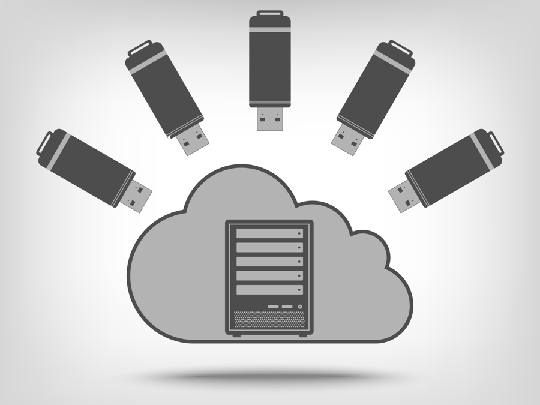
In today’s digital-first world, it’s more important than ever to keep business information secure. Data loss from cyberattacks, natural disasters, human error or hardware failure can be devastating. Impacts can range from financial loss to damage to your reputation – both of which can be difficult for a business to overcome. Fortunately, there are things you can do to help safeguard your data, like implementing a backup policy. Not sure where to start? QualityIP is here to help with some data backup best practices to help minimize the risk of data loss and disruption to your operation.
Why Data Backup is Crucial
Data is the backbone of your business. From customer information to financial records, there’s a lot of important information floating around every day. Unfortunately, unexpected things happen, which can lead to data loss. These events can occur at any moment, crippling your business. Be ready for anything by always having a backup available. Expect the unexpected and plan ahead with a disaster recovery strategy in place that includes data backup best practices. By always having a copy of important information available, you can restore your system in the event of data loss, minimizing downtime and getting you back to business. Essentially, a data backup strategy is a safety net for businesses.
Ready to get started? Here are some best practices that businesses should follow for data backup:
1. Schedule Regular Backups: Regularly backing up data ensures that you always have the latest version of all files. However, manual backups are prone to errors and forgetfulness. Automating the process will ensure that backups are done consistently, completely and in a timely manner. You can schedule backups daily, weekly or even in real-time, depending on how critical the data is. Using automation tools for your backups will reduce the risk of human error while saving time.
2. Use Cloud-Based Backup Solutions: Cloud backup solutions have become a popular choice for businesses of all sizes. Cloud solutions are scalable, with storage that can be increased as needed. These storage solutions also offer the added benefit of remote access, making it easy for employees to retrieve files and restore data from anywhere. By eliminating the hardware factor, businesses can also cut costs and eliminate the risk of losing their backup in the event of a natural disaster. When choosing a cloud-based service, look for a provider that offers encryption and redundancy for the highest level of security.

3. Encrypt Data: Many people don’t think about keeping backup data secure, but backup files are just as susceptible to theft as any other files. Keep your backup files secure with data encryption. Data encryption ensures that if the backup files are someone accessed by the wrong person, they can’t be read without the encryption key. Many cloud-based backup solutions offer built-in 256-bit encryption features for the best security.
4. Follow the 3-2-1 Backup Rule: The 3-2-1 backup rule is a widely accepted industry standard. It encourages businesses to have three copies of data – the primary copy and two backups. The backups should be stored in two different ways, like a combination of local drives and network-attached storage or external hard drives. One copy of the backup should always be kept offsite, in a remote location or on a cloud storage service to protect against physical disasters. The 3-2-1 backup rule guarantees data availability even if one or two copies are compromised.
5. Conduct Regular Backup Testing: Having a backup won’t do you any good if you can’t restore your system. Regularly test your backups by using them to restore files and applications in a test environment. Testing will identify any potential issues and allow for them to be corrected before a real disaster occurs.
6. Identify and Prioritize Critical Data: Not all data is equal. Identify critical data like customer records, financial information and important operational documents, then prioritize its backup. Critical data should be backed up more frequently and have a higher level of security than less essential data.
7. Secure Your Backups: Ensure physical security of all backup devices, like external hard drives, by securing them in locked cabinets, a secure storage room or even at an offsite location. Protect backups from theft, fire or water damage. For maximum protection, use a fireproof and waterproof storage safe to hold physical backups and external hard drives. That way, if a natural disaster does occur, your backup will still be safe.
8. Monitor Backup Logs: Many backup systems offer a backup log, which gives valuable insight into the status of your backups. Review the logs regularly to identify any errors or problems with the backup. Many modern tools also provide automated alerts for system errors, making it easy to proactively troubleshoot any issues before they can escalate.
9. Implement Role-Based Access: Everyone in the company doesn’t need access to the backup. Restricting access to backup data prevents unauthorized users from viewing, modifying or accidentally deleting data. Restrict access to IT administrators and authorized personnel only and review who has access on a quarterly or annual basis.
10. Make a Plan: A disaster recovery plan isn’t just a good idea, it’s an essential component of keeping data secure. These plans detail how to restore business operations after a data loss event. The disaster recovery strategy should include steps for data restoration, employee communication and any steps that will be taken toward IT infrastructure recovery. Having a plan in place ensures your team is ready to respond effectively during an emergency.
Data backup isn’t just a one-time event; it’s a continuous process that will evolve with your business. By following data backup best practices, you can reduce the risk of data loss and ensure operational continuity. In today’s tech-driven world, a well-thought-out data backup strategy is a non-negotiable.